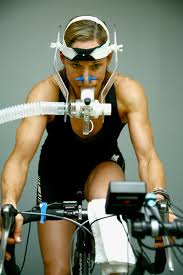Aerobic training is training that focuses on developing the cardiovascular and aerobic energy system. Once again much of this content has already been covered in Factors Affecting Performance when you looked at How does training affect performance? under types of training and training methods aerobic training. However, again we have a change from a dash to a dot point requiring you to have a deeper knowledge of this type of training and the various methods within it.
The HSC PDHPE syllabus says:
Students learn about:
- aerobic training
Students learn to:
- analyse TWO of the training types by drawing on current and reliable sources of information to:
- examine the types of training methods and how they best suit specific performance requirements
- design a training program
- describe how training adaptations can be measured and monitored
- identify safe and potentially harmful training procedures.
Aerobic training programs
The principles of training are required as an aerobic training program is designed. The work load should increase as adaptations occur and training should be specific to the sport etc. Furthermore, FITT can be used to ensure training produces physiological adaptations.
Endurance training should be done frequently at least 3 times a week in order to produce physiological adaptations. The duration of the exercise should be 20+ min, although new research on high intensity interval training, seems to indicate benefits occur with less time. Intensity should be in the aerobic training zone, although you also get benefits from interval training in the anaerobic training zone.
How aerobic training adaptations are measured and monitored
Aerobic training produces many physiological adaptations. These adaptations can be to the cardiovascular system (stroke volume, heart rate, haemoglobin etc) or to the muscles (myoglobin, aerobic enzymes, mitochondria etc). Although these can be measured specifically through laboratory testing, these are not often done. Instead aerobic performance is measured, usually relying on VO2 max or sub max testing. These include tests such as: the beep test, treadmill or bike VO2 max test, YMCA sub max test etc.
Safety in aerobic training
Safety for endurance training is important. Aspects such as remaining hydrated, waiting after meals before training, using a safe environment, wearing the correct clothing and footwear all help to promote safety in training. Other aspects could include: using fitness professionals such as personal trainers and exercise physiologists to provide fitness appraisals (including prescreening) and write programs will help ensure athlete safety. Overuse injuries are common in aerobic training and it is important to provide rest periods for recovery.
Past HSC PDHPE Exam Questions (2012-2022)
2018 Question 31
(a) Explain both safe and potentially harmful training procedures related to TWO
training types. 8 marks
2019 Question 31
(a) (i) Describe TWO different types of training methods that are best suited to the performance requirements of an athlete in a particular sport. 4 marks
(ii) How can the training adaptations for the athlete identified in part (i) be measured and monitored? 4 marks
